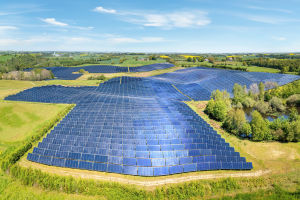With the rapid development of technology, unmanned aerial vehicles (UAVs) have become a revolutionary tool in the agricultural field. From planting and irrigation to pest and disease monitoring, drones have brought unprecedented changes to agriculture.
They not only improve work efficiency, but also help farmers make more accurate decisions, greatly promoting the improvement of agricultural productivity. Today, let's explore how drones can add technology to agriculture.
Application of drones in agriculture
UAVs are widely used in agriculture, covering almost every aspect of agricultural production. First of all, one of the most common applications is crop monitoring. Drones are equipped with high-definition cameras and sensors, which can capture aerial images of large tracts of farmland in real time and provide farmers with high-quality data. This data can not only help farmers understand the growth of crops, but also analyze images to assess soil moisture, nutrient content, and the presence of pests and diseases.
In addition, drones are also widely used for precision fertilization and spraying of pesticides. Equipped with a spray system, drones can accurately fertilize crops and spray pesticides in the fields. Compared with traditional manual spraying methods, drones can reduce chemical waste, reduce costs, and improve the efficiency of pesticide and fertilizer use. This efficient fertilization method not only helps reduce environmental pollution, but also ensures the healthy growth of crops.
Improve production efficiency
Traditional agricultural production methods often require a lot of manpower and time investment. The use of drones can greatly improve work efficiency. With the help of drones, farmers can complete large-scale farmland inspections, fertilization, spraying and other tasks in a short period of time. Drones have a fast flight speed and can cover areas that are difficult to reach with traditional methods, especially in large farmlands or hilly areas, where traditional agricultural machinery often cannot fully play its role.
Drones can also operate around the clock, and can perform precise operations with their powerful sensors and night vision functions, whether during the day or at night. For farmers, this means being able to complete more tasks in a shorter time, improving production efficiency and output.
Precision Agriculture and Data Analysis
One of the most revolutionary features of drones is that they can provide data support for precision agriculture. Through the data collected by drones, farmers can obtain real-time information about crop growth and make more scientific management decisions. For example, based on soil moisture and nutrient content, farmers can accurately control the time and amount of irrigation and fertilization, avoiding over-fertilization and water waste.
In addition, drone image analysis can also help farmers find potential problems in the fields. For example, pests and diseases in farmland often show different colors or forms in the early stages. Using high-definition images collected by drones, farmers can quickly find problems and take appropriate measures to deal with them. This not only saves costs, but also effectively controls the spread of pests and diseases in farmland.
Reducing Agricultural Costs
The application of drones has greatly reduced the cost of agricultural production. Traditional agricultural production often requires a lot of manual input, such as hiring manpower for field inspections, fertilization, and spraying pesticides, while the use of drones can complete these tasks in a shorter time, reducing labor costs. At the same time, drones can accurately control the amount of pesticides and fertilizers used, avoiding overuse and reducing input costs.
In addition, the use of drones for farmland monitoring and management can also reduce dependence on agricultural machinery and reduce maintenance and operation costs. By reducing the use of machinery, drones not only reduce farmers' operating costs, but also reduce the negative impact on the environment during agricultural production.
Future Outlook
With the continuous advancement of drone technology and the increase in agricultural demand, the application prospects of drones in agriculture in the future are very broad. From precision agriculture to smart agriculture, drones are helping farmers move towards a smarter and more efficient agricultural production method. It is expected that in the future, more and more farmers will adopt drone technology to increase crop yields, reduce costs, and achieve sustainable development goals.
Not only that, with the combination of artificial intelligence and big data analysis, drones will be able to provide more accurate farmland data analysis to help farmers optimize agricultural decisions. The continuous innovation of drone technology will bring more opportunities and challenges to global agriculture.
Looking Ahead: The Future of UAVs in Agriculture
In general, drones are giving agriculture the wings of science and technology and changing the face of traditional agriculture. By improving work efficiency, precise management, and data analysis, drones not only bring higher productivity to farmers but also promote agriculture toward an intelligent and refined future. I believe that with the continuous development of technology, drones will play an increasingly important role in agriculture, helping farmers achieve better production benefits and sustainable development.
Lykkers, the future of agriculture will definitely be more intelligent. Does it also make you look forward to the application of drones?


